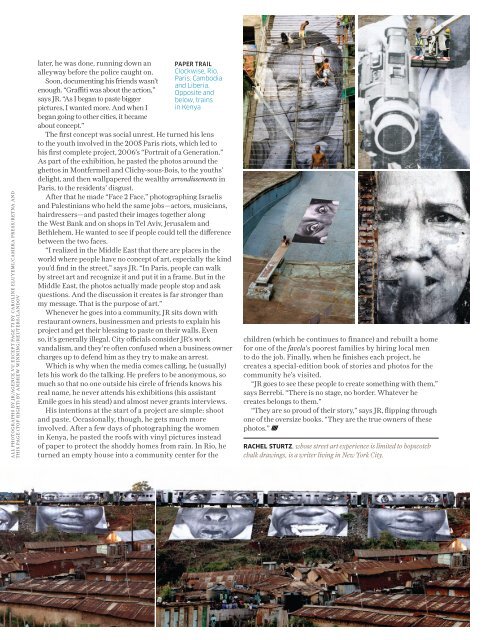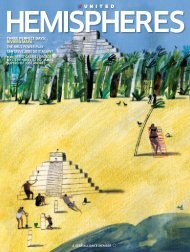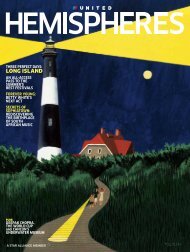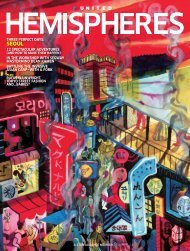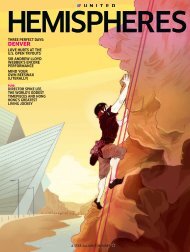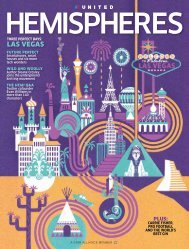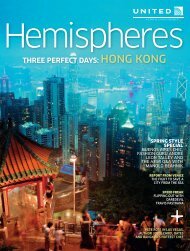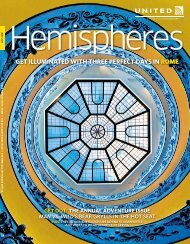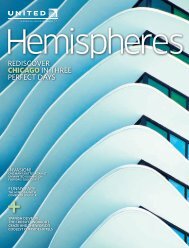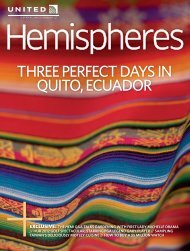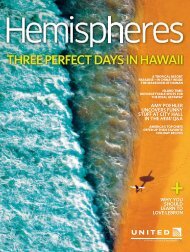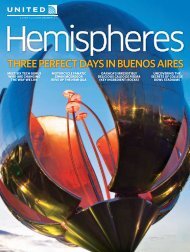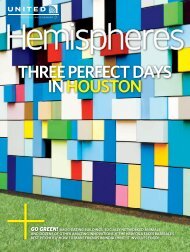Create successful ePaper yourself
Turn your PDF publications into a flip-book with our unique Google optimized e-Paper software.
ALL PHOTOGRAPHS BY JR/AGENCE VU EXCEPT PAGE 73 BY CAROLINE ELUYEMI/CAMERA PRESS/RETNA AND<br />
THIS PAGE (TOP RIGHT) BY ANDREW WINNING/REUTERS/LANDOV<br />
later, he was done, running down an<br />
alleyway before the police caught on.<br />
Soon, documenting his friends wasn’t<br />
enough. “Graffi ti was about the action,”<br />
says JR. “As I began to paste bigger<br />
pictures, I wanted more. And when I<br />
began going to other cities, it became<br />
about concept.”<br />
PAPER TRAIL<br />
Clockwise, Rio,<br />
Paris, Cambodia<br />
and Liberia.<br />
Opposite and<br />
below, trains<br />
in Kenya<br />
The fi rst concept was social unrest. He turned his lens<br />
to the youth involved in the 2005 Paris riots, which led to<br />
his fi rst complete project, 2006’s “Portrait of a Generation.”<br />
As part of the exhibition, he pasted the photos around the<br />
ghettos in Montfermeil and Clichy-sous-Bois, to the youths’<br />
delight, and then wallpapered the wealthy arrondissements in<br />
Paris, to the residents’ disgust.<br />
After that he made “Face 2 Face,” photographing Israelis<br />
and Palestinians who held the same jobs—actors, musicians,<br />
hairdressers—and pasted their images together along<br />
the West Bank and on shops in Tel Aviv, Jerusalem and<br />
Bethlehem. He wanted to see if people could tell the diff erence<br />
between the two faces.<br />
“I realized in the Middle East that there are places in the<br />
world where people have no concept of art, especially the kind<br />
you’d fi nd in the street,” says JR. “In Paris, people can walk<br />
by street art and recognize it and put it in a frame. But in the<br />
Middle East, the photos actually made people stop and ask<br />
questions. And the discussion it creates is far stronger than<br />
my message. That is the purpose of art.”<br />
Whenever he goes into a community, JR sits down with<br />
restaurant owners, businessmen and priests to explain his<br />
project and get their blessing to paste on their walls. Even<br />
so, it’s generally illegal. City offi cials consider JR’s work<br />
vandalism, and they’re often confused when a business owner<br />
charges up to defend him as they try to make an arrest.<br />
Which is why when the media comes calling, he (usually)<br />
lets his work do the talking. He prefers to be anonymous, so<br />
much so that no one outside his circle of friends knows his<br />
real name, he never attends his exhibitions (his assistant<br />
Emile goes in his stead) and almost never grants interviews.<br />
His intentions at the start of a project are simple: shoot<br />
and paste. Occasionally, though, he gets much more<br />
involved. After a few days of photographing the women<br />
in Kenya, he pasted the roofs with vinyl pictures instead<br />
of paper to protect the shoddy homes from rain. In Rio, he<br />
turned an empty house into a community center for the<br />
children (which he continues to finance) and rebuilt a home<br />
for one of the favela’s poorest families by hiring local men<br />
to do the job. Finally, when he finishes each project, he<br />
creates a special-edition book of stories and photos for the<br />
community he’s visited.<br />
“JR goes to see these people to create something with them,”<br />
says Berrebi. “There is no stage, no border. Whatever he<br />
creates belongs to them.”<br />
“They are so proud of their story,” says JR, fl ipping through<br />
one of the oversize books. “They are the true owners of these<br />
photos.”<br />
RACHEL STURTZ, whose street art experience is limited to hopscotch<br />
chalk drawings, is a writer living in New York City.


